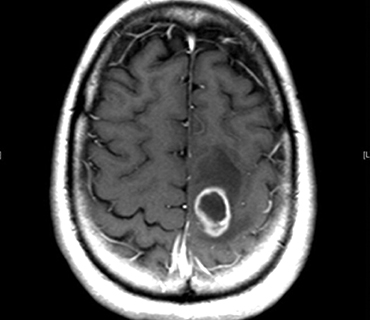Glioblastoma Multiforme(GBM)
Glioblastoma Multiforme(GBM)

What Is Glioblastoma?
Glioblastoma is a type of brain cancer. It’s the most common type of malignant brain tumor among adults. And it is usually very aggressive, which means it can grow fast and spread quickly.
Where It Forms in the Brain
Glioblastoma is a type of astrocytoma, a cancer that forms from star-shaped cells in the brain called astrocytes. In adults, this cancer usually starts in the cerebrum, the largest part of your brain.
How Common Is It?
Brain cancers aren’t common. And when they do happen, about 4 out of 5 aren’t glioblastomas. Men are more likely to get them than women. And chances go up with age.
Symptoms
Because glioblastomas grow quickly, pressure on the brain usually causes the first symptoms. Depending on where the tumor is, it can cause:
- Constant headaches
- Seizures
- Vomiting
- Trouble thinking
- Changes in mood or personality
- Double or blurred vision
- Trouble speaking
Diagnosis
A neuro-specialist doctor will give you a complete exam and evaluate you with an MRI or CT scan and other tests, depending on your symptoms.
Treatment
The goal of glioblastoma treatment is to slow and control tumor growth and help you live as comfortably and as well as possible. There are four treatments, and many people get more than one type:
Surgery is the first treatment. The surgeon tries to remove as much of the tumor as possible. In high-risk areas of the brain, it may not be possible to remove all of it. Radiation is used to kill as many leftover tumor cells as possible after surgery. It can also slow the growth of tumors that can’t be removed by surgery. Temozolomide is the most common chemotherapy drug used for glioblastoma. Chemo can cause short-term side effects, but it’s much less toxic than it used to be. Doctors can treat glioblastoma that comes back with another chemotherapy drug called carmustine (or BCNU).
Normally, GBM often regrows and if that happens, doctors may be able to treat it with surgery in combination with repeat radiation and chemotherapy depending on previous treatment taken.
Outlook and Survival Rates
Many things can affect how well someone does when they have cancer of brain – glioblastomas. Doctors often can’t predict what someone’s life expectancy will be if they have a glioblastoma. But various studies and statistics involving large groups of people who’ve had GBM can determine a rough estimate of survival rate:
- One year: 40.2%
- Two years: 17.4%
- Five years: 5.6%
These numbers can’t predict what will happen to an individual, though. A person’s age, type of tumor, and overall health play a role. As treatments improve, people newly diagnosed with these aggressive brain tumors may have a better outcome.
